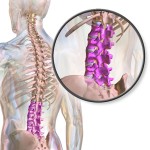Risk of adjacent segment disease after spine surgery: predictors for future surgery
 A group of researchers examined the risk factors for adjacent segment disease following spinal fusion and non-fusion surgery and published their findings in the Journal of Bone and Joint Surgery.
A group of researchers examined the risk factors for adjacent segment disease following spinal fusion and non-fusion surgery and published their findings in the Journal of Bone and Joint Surgery.
The retrospective analysis examined a consecutive series of 1,358 patients who underwent cervical spine surgery performed by a single surgeon. The procedural breakdown included:
• 1,038 anterior approaches
• 29 posterior approaches
• 28 combined anterior and posterior approaches
There were 214 posterior decompression patients, 14 laminoplasty patients and 69 foraminotomy patients. There were 32 patients who had arthroplasty and 17 patients who underwent a combination of arthroplasty and anterior arthrodesis.
Here are the findings:
1. There was a relatively constant adjacent segment reoperation rate of 2.3 percent of patients per year.
2. A Kaplan-Meier analysis predicts 21.9 percent of the patients will need an adjacent segment surgery 10 years postoperatively.
3. Factors associated with increased reoperation risk at the adjacent segment include:
• Smoking
• Female sex
• Type of surgery
4. Posterior-only arthrodesis or combined anterior and posterior arthrodesis had a 7.5-times greater risk of the adjacent-segment disease requiring surgery than posterior decompression, and three-times greater risk than anterior arthrodesis, according to the report.
5. The arthroplasty group — including arthroplasty alone and hybrid arthroplasty, anterior cervical arthrodesis group and posterior decompression group showed no significant differences in reoperation risk.
6. The other factors that didn’t show risk were:
• Age
• Neurological diagnosis
• Diabetes
• Number of surgically treated segments
